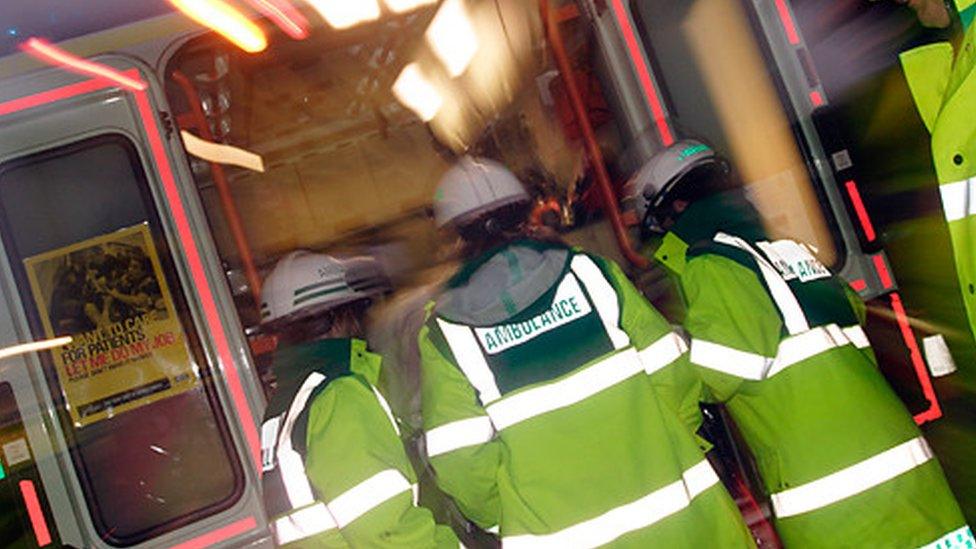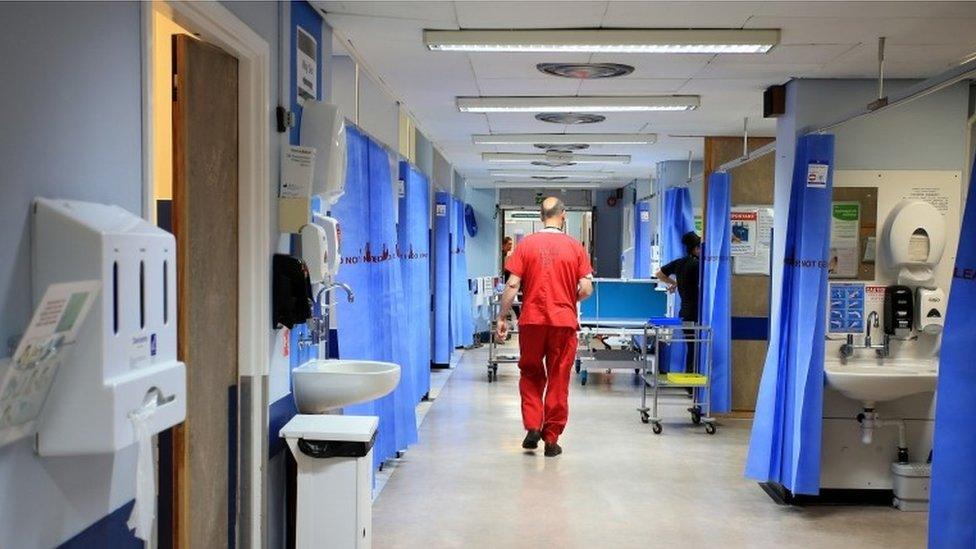Jeremy Hunt casts doubt on NHS's four-hour A&E target
- Published
Jeremy Hunt MP: "Only four other countries...have similar national standards"
Patients attending A&E units with less serious problems may no longer be guaranteed to be seen in four hours, the health secretary has suggested.
Jeremy Hunt told the House of Commons the government was "committed to maintaining" the target.
But he said if the standard was to be "protected" it might need to be applied to only those patients with urgent needs rather than minor problems.
It comes as hospitals are reporting unprecedented pressures this winter.
Department of Health sources said there were no immediate plans to change the target but ministers wanted an honest conversation with the public about A&E.
Currently, every patient who goes to an accident and emergency department should be seen in four hours.
But hospitals have been struggling to achieve that - the target has not been met since the summer of 2015.
Mr Hunt said it was time to look at how the target - one of the most high profile in the health service - was measured.
He said no other country in the world had such a stringent standard for A&E treatment.

"This government is committed to maintaining and delivering that vital four-hour commitment to patients.
"But since it was announced in 2000, there are nearly nine million more visits to our A&E, up to 30% of whom, NHS England estimate, do not need to be there, and the tide is continuing to rise.
"So if we are going to protect our four-hour standard, we need to be clear it is a promise to sort out all urgent health problems within four hours - but not all health problems, however minor."

The four-hour A&E target explained
It measures the point at which a patient arrives at A&E to when they are admitted, discharged or transferred elsewhere
It applies to all patients from those with life-threatening emergencies to minor ailments
Hospitals are meant to achieve the four-hour target in 95% of cases
The last time it was met was July 2015

As well as raising the prospect of re-defining the target, Mr Hunt said he would be looking at new ways of managing the way patients used A&E services.
Some hospitals have started piloting a new system called streaming, which sees staff assessing patients when they walk through the door and sending them elsewhere if they are deemed to have only minor ailments.
Mr Hunt said it would allow hospitals to focus quick care on those "who actually need it".
But Liberal Democrat health spokesman Norman Lamb criticised the idea.
"This is a slippery slope towards the downgrading of standards," he said.
"If the health secretary thinks it is acceptable for patients to be left waiting indefinitely in A&Es, or that this is a solution to the severe pressures facing the NHS, then he is sorely mistaken."
Labour shadow health secretary Jon Ashworth said ministers needed to "get to a grip" on the problem.
And British Medical Association leader Dr Mark Porter said ministers should instead focus on increasing investment and developing a "long-term plan to protect patients who are enduring some of the worst conditions in decades".
- Published6 January 2017

- Published6 January 2017

- Published6 January 2017
